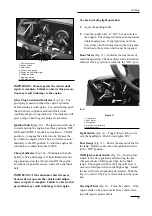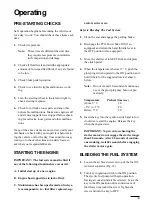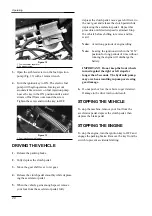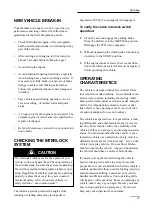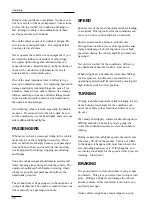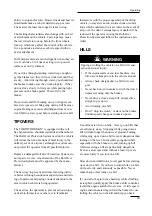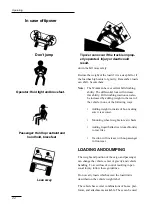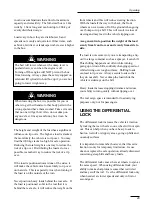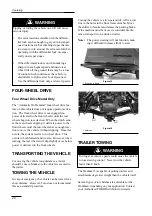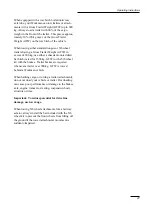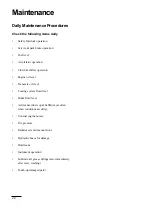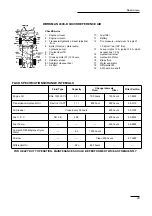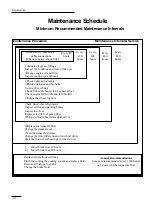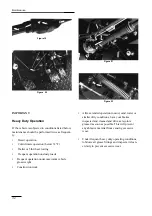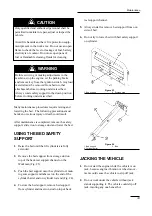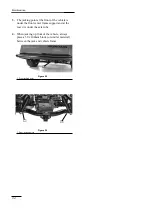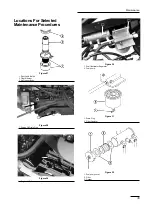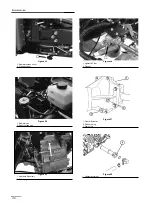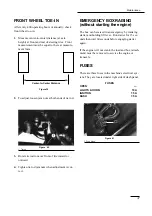
Many factors contribute to accidents. You have con-
trol over several of the most important. Your actions,
such as driving too fast for conditions, braking too
fast, turning too sharp, and combinations of these,
are frequent causes of accidents.
One of the major causes of accidents is fatigue. Be
sure to take occasional breaks. It is important that
you stay alert at all times.
Never operate the vehicle, or any equipment, if you
are under the influence of alcohol or other drugs.
Even prescription drugs and cold medicines can
cause drowsiness. Read the label on the medicine or
check with your doctor or pharmacist if you are
unsure about a certain medication.
One of the most important rules to follow is to go
slower in unfamiliar areas. It is surprising how much
damage and injury common things can cause. Tree
branches, fences, wires, other vehicles, tree stumps,
ditches, sand traps, streams, and other things found
in most parks and golf courses can be hazardous to
the operator and passenger.
Avoid driving when it is dark, especially in unfamil-
iar areas. If you must drive when it is dark, be sure
to drive cautiously, use the head lights, and even con-
sider adding additional lights.
PASSENGERS
Whenever you have a passenger riding in the vehicle
make sure he or she is holding on securely. Drive
slower and turn less sharply because your passenger
does not know what you intend to do next and may
not be prepared for turning, stopping, accelerating,
and bumps.
You and your passenger should remain seated at all
times, keeping arms and legs inside the vehicle. The
operator should keep both hands on steering wheel,
whenever possible and passenger should use the
hand holds provided.
There should never be passengers in the dump box or
on any attachments. The vehicle is meant to have one
driver and only one passenger-no more.
SPEED
Speed is one of the most important variables leading
to accidents. Driving too fast for the conditions can
cause you to lose control and have an accident.
Speed can also make a minor accident worse.
Driving head-on into a tree at slow speed can cause
injury and damage, but, driving into a tree at high
speed can destroy the vehicle and kill you and your
passenger.
Never drive too fast for the conditions. If there is
any doubt about how fast to drive, slow down.
When using heavy attachments (more than 500 kg),
such as sprayers, top dressers, or spreaders, etc.,
operating speeds should be restricted by moving 3rd
high lockout switch to slow position.
TURNING
Turning is another important variable leading to acci-
dents. Turning too sharply for the conditions can
cause the vehicle to lose traction and skid, or even
tip over.
Wet, sandy and slippery surfaces make turning more
difficult and risky. The faster you are going, the
worse this situation becomes so, slow down before
turning.
During a sharp turn at higher speeds, the inside rear
wheel may lift off of the ground. This is not a flaw
in the design, it happens with most four wheel vehi-
cles including passenger cars. If this happens, you
are turning too sharply for the speed at which you are
traveling. Slow down!
BRAKING
It is good practice to slow down before you get near
an obstacle. This gives you extra time to stop or turn
away. Hitting an obstacle can damage the vehicle
and its contents. More important, it can injure you
and your passenger.
Gross vehicle weight has a major impact on your
22
Operating










